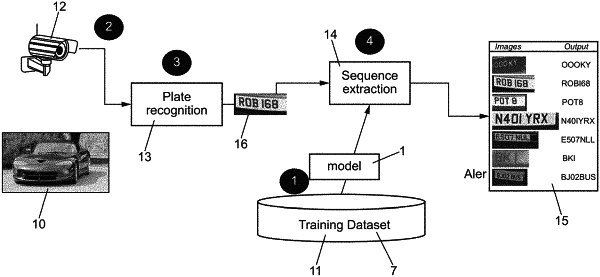| CPC G06V 10/82 (2022.01) [G06F 16/51 (2019.01); G06F 18/00 (2023.01); G06F 18/214 (2023.01); G06N 3/047 (2023.01); G06N 3/08 (2013.01); G06V 10/70 (2022.01); G06V 20/63 (2022.01); G06V 20/625 (2022.01); G06V 30/10 (2022.01)] | 24 Claims |

|
1. A method for training a neural network, for recognition of a first random sequence of characters in a first image, said first random sequence containing at least one letter and at least one number, each character of said first random sequence being a letter, number, or separator, said characters being separated from each other by gaps, and without a predefined format, comprising:
a step of creating an artificial database of a plurality of random sequences of characters in images, said plurality of random sequences including at least one first training sequence and at least one second training sequence, each random sequence of the plurality of random sequence including at least one letter and at least one number, said at least one first training sequence being generated randomly, said at least one second training sequence being derived from a transformation of said at least one first training sequence,
a learning step that teaches the neural network to recognize the first random sequence of characters in the first image, directly on at least some of said plurality of random sequences of said artificial database, without a prior subdividing of the first random sequence into component characters,
wherein the learning step which teaches the neural network uses a cost function to compare two probability distributions representative of the first random sequence to be recognized, and
wherein the cost function of the first random sequence is a sum of the cost functions of each character.
|